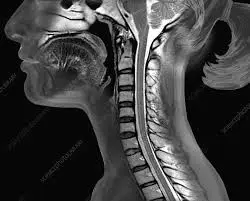How to Interpret Cervical Spine MRI: 3 Essential Techniques
A cervical spine MRI is a detailed imaging technique that uses magnetic fields and radio waves to create pictures of the neck area. This guide will explain what a cervical spine MRI shows, why it's used, and how to interpret the findings.
What is a Cervical Spine MRI?
A cervical spine MRI is a non-invasive test that provides detailed images of the bones, discs, spinal cord, and soft tissues in your neck. It's a powerful tool for diagnosing various neck and spinal cord issues. Let’s dive into what this technique involves and what it reveals.

What Can a Cervical Spine MRI Show?
- Detailed Imaging: Clear visualization of the cervical vertebrae, intervertebral discs, spinal cord, and surrounding soft tissues.
- Disc Abnormalities: Detection of herniated or bulging discs, which can cause neck pain and nerve compression.
- Spinal Cord Issues: Identification of conditions affecting the spinal cord, such as compression, inflammation, or tumors.
- Ligament and Soft Tissue Injuries: Diagnosis of sprains, strains, and other injuries affecting soft tissues in the neck.
- Bone Abnormalities: Detection of fractures, dislocations, tumors, or degenerative changes in the cervical vertebrae.
- Nerve Compression: Helps pinpoint areas where nerves may be compressed or irritated, leading to pain, numbness, or weakness.
Why Might You Need a Cervical Spine MRI?
- Neck Pain: To find the cause of persistent neck pain, especially if it radiates down the arms.
- Numbness or Weakness: To investigate neurological symptoms in the arms or hands.
- Suspected Spinal Cord Injury: Following trauma or an accident to assess damage to the spinal cord.
- Pre-Surgical Planning: To get detailed information about the condition before surgery.
- Monitoring Known Conditions: To follow the progress of conditions such as spinal stenosis, multiple sclerosis, or tumors.
How to Interpret Cervical Spine MRI Results
Understanding your MRI results is vital for effective health management. Here's an overview of some common methods to aid in interpreting results.
1. Utilizing X-ray Interpreter
X-ray Interpreter now offers AI-driven analysis of MRI images. Here's how you can use it:
- Registration: Sign up on X-ray Interpreter to use our AI for MRI analysis.
- Uploading MRIs: Upload your cervical spine MRI images.
- Reviewing Interpretation: Receive an AI-generated interpretation with a detailed report.
- Consultation: Always consult with your doctor for complete diagnosis and treatment planning.
Check our get started guide for more details.
2. Using ChatGPT Plus
ChatGPT Plus, with its advanced GPT-4V model, can help analyze MRI images:
- Subscription: Subscribe to ChatGPT Plus for advanced features.
- Uploading MRIs: Upload your MRI images to the OpenAI platform.
- Request Analysis: Ask the AI to interpret your MRI images and generate a report.
- Review and Validate: Review the results and validate the accuracy with your healthcare provider.
Find out more in our blog on using ChatGPT Plus for medical image interpretation.
Alternatively, as several other AI models with vision capabilities emerge, you can also try other models, such as Grok by xAI, Claude by Anthropic, Gemini by Google Deepmind.
3. Understanding the Basics Yourself
While not a substitute for medical advice, learning some basics can help you better understand your results and prepare questions for your doctor.
- Learn Anatomy: Familiarize yourself with the basic anatomy of the cervical spine.
- Read Guides: Many online resources offer information about common MRI findings.
- Ask Questions: Note any unfamiliar terms and ask your doctor during follow-up appointments.
- Seek Expert Guidance: Validate your understanding with a healthcare professional.
Comparing Different Approaches
Here's a comparison of the different methods for interpreting cervical spine MRIs:
| Criteria | X-ray Interpreter | ChatGPT Plus | Self-Reading |
|---|---|---|---|
| Accuracy | Mostly High (AI-based)1 | Mostly High (AI-based)1 | Varies (Skill-dependent) |
| Ease of Use | Easy | Moderate | Challenging |
| Cost | Starting from $2.50 per image | $20 per month | Free (excluding educational costs) |
| Time Efficiency | Fast | Moderate to Fast | Slow to Moderate |
| Learning Curve | Low | Low to Moderate | High |
| Additional Resources | Provided | Partially Provided (through OpenAI) | Self-sourced |
Each method has pros and cons. AI-driven options provide fast and precise analysis, while a basic understanding aids in patient-doctor communication.
Conclusion
Cervical spine MRIs are crucial for diagnosing various conditions affecting the neck. This guide has covered the use of this technique, the images they produce, and how you can use AI tools and research to better understand your results.
Consider your needs, understanding, and available resources when choosing a method. Adhere to privacy standards and seek expert medical validation.